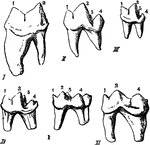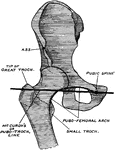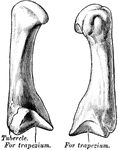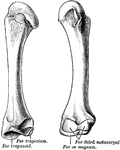Clipart tagged: ‘Tubercle’

Carnivora
"Modifications of the Lower Sectorial Tooth in Carnivora. I, Felis; II, Cunis; III, Herpestes; IV, Lutra;…

Liphistius Desultor
"Liphistius desultor. Lateral view. I to VI, Appendages of the prosoma cut off at the base. o, Ocular…

Pubic Spine
Diagram showing that the pubic spine (tubercle) and the tip of the great trochanter are on the same…

Stomechinus intermedius
"Stomechinus intermedius. a, portion of ambulacral area; b, poriferous zones; c, two interambulacral…

